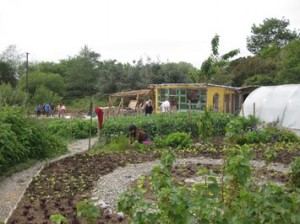
Early spring is a good time to have a think about planning your garden and where to place your vegetables, flowers, fruits and herbs.
The soil is warming up and getting ready to receive the seedlings that have been potted on under protection, just watch for late frosts. Consider the position of these plants according to frequency of harvesting and use, and the level of maintenance required.
Plants such as herbs and lettuces should be as close to the house as possible for easy access, and keeping a close eye. Vegetables such as leeks, garlic and onions don’t need as much maintenance, therefore can be further away from you kitchen door.

A plants life expectancy should also influence where it is positioned. For example, longer growing vegetables such as broccoli and turnips will need less maintenance and should be incorporated into your garden design. They will also provide food in the hungry gap of late spring/early summer since they over winter and produce earlier; they are also less prone to pests and diseases as there are less around in the winter.
When choosing what to grow, if you have not done most of this already, choose crops that you and your family like to eat. Grow vegetables and herbs which are expensive to buy in the shops such as mixed salad leaves, garden peas, parsley and coriander.
Avoid planting too much of one crop as you will end up with too many plants going to seed and getting tough and bitter to eat. Sow smaller amounts of fast growing varieties at frequent intervals for successional harvesting.
Cut and come varieties are useful for harvesting small amounts at a time. Try plucking the outer leaves of lettuces rather than the whole plant.
Also, try cutting back rocket or perpetual spinach with a knife or scissors, leaving a few leaves to help the plant regenerate new growth.
